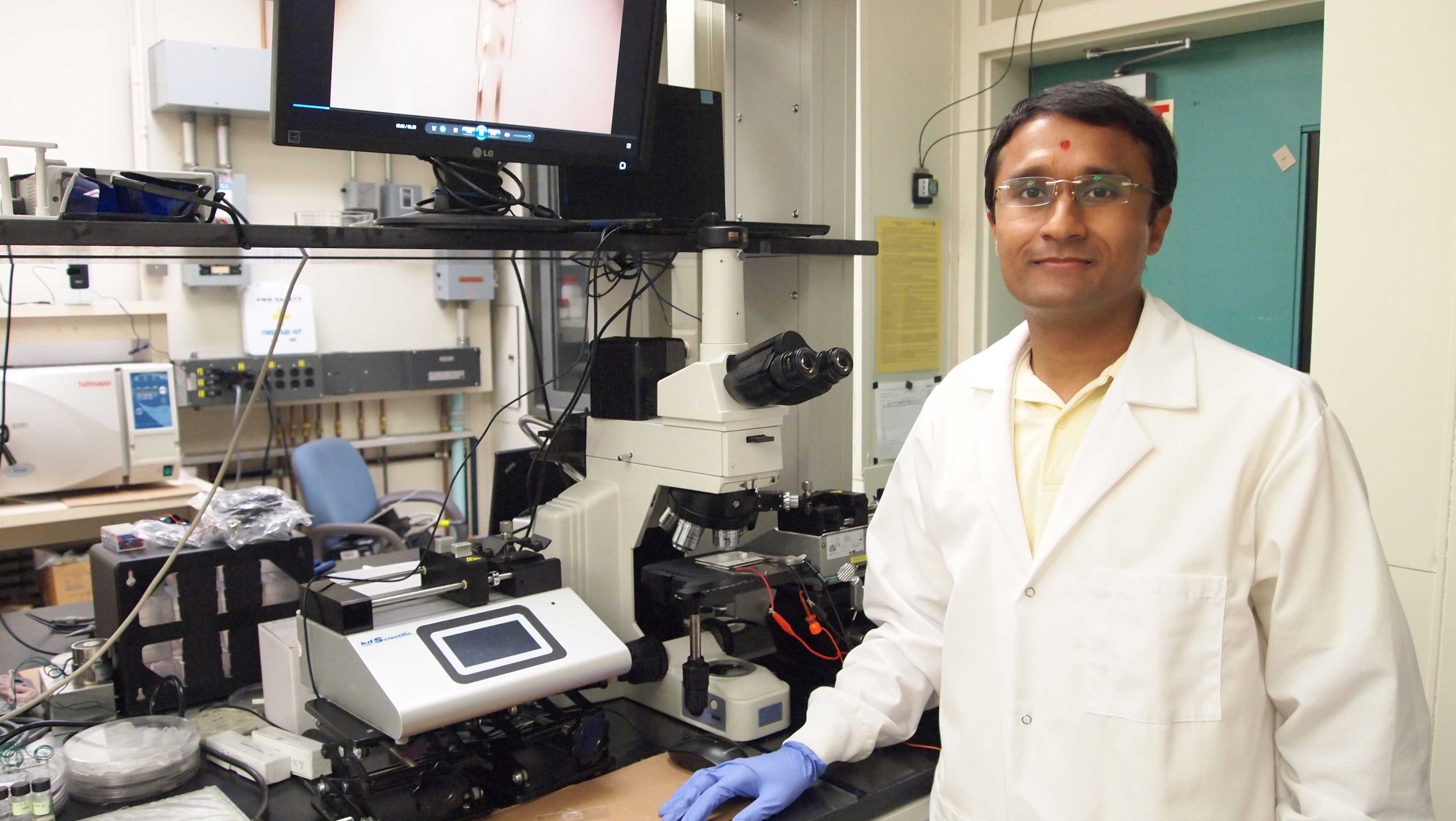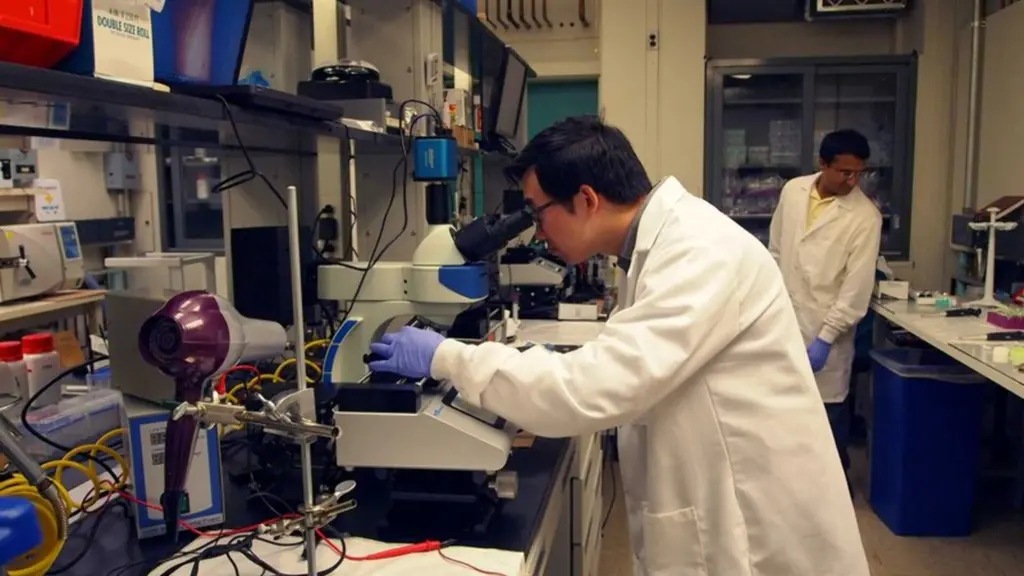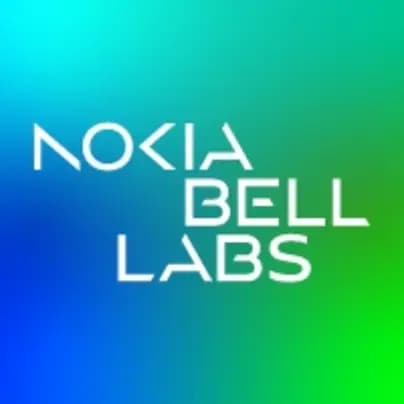Researcher Shreyas Shah on the future of personalized medicine

Shreyas Shah has been a researcher at Nokia Bell Labs since 2015. With a bachelor’s in biomedical engineering and a PhD in chemistry, Shah now leads a small lab team looking at the future of human sensing in healthcare. Shah’s physiological communications research is a project within the Emerging Materials Components and Devices (EMCD) group led by Sanjay Patel.
This interview has been edited for brevity and clarity.
Q: What’s the high-level focus of your research?
There is a vast array of biosignals emanating from our body, which are important indicators of our overall health and well-being. In the new age of personalized medicine, wearables have become very popular to help us measure these biosignals from the comforts of our very home. But at this point, when you really look at the field, the focus is on measuring vital signs. These things like heart rate, body temperature, respiration rate, etc. Our research is about doing more than just vital signs with wearables, going beyond vital signs to look at something that is more biochemical in content.
Q: Why go beyond vital signs?
With vital signs, it’s very accessible to everyone. Anyone can get these watches for continuous monitoring, but the information content’s relevance to physiology and medicine is limited. Whereas, when you get a blood test, there’s a lot of clinically-relevant content there to enable enhanced diagnostics and therapies for various ailments including disease, injury and cancer. But there is limited accessibility to the average person, especially for monitoring on a continuous basis. The idea is, how can we bridge this gap? Can we develop a wearable which can remain completely non-invasive but still have the specificity to probe the rich biochemistry that’s deep inside, under the skin? Our work involves exploring the kind of materials, optics, electronics and interfaces that could help facilitate the creation of this new generation of wearables.
Q: Though the research is still in its early stages, what are some potential applications?
One application is monitoring for chronic illnesses. Glucose monitoring for diabetics is one such example that is widely explored. The conventional approach today still requires several finger pricks throughout the day to check sugar levels. There are also other relevant biomarkers which are indicative of well-being, but are just not measurable yet in a robust, reliable and continuous manner. You could imagine the relevance to disease or cancer monitoring as well. These are cases where the earlier you know, the better. The same drugs that would be used at later stages would be much more effective if detected early. But you wouldn’t expect to have such an ailment at an earlier stage since the related signs are not pronounced nor evident. In this way, someone who is known to be at high risk, or that is known to have a certain medical condition or is otherwise going through treatment already, can be monitored regularly at the biochemical level even after leaving the clinic.
Q: What might a non-invasive form factor look like?
A watch, or even a textile like a sleeve or a shirt would make the most sense. But maybe it’s nothing at all! We can imagine there’s something in the room which is monitoring you and continuously acquiring information about your physiological state. Just as we have gotten used to speaking to our devices and asking questions like, “What’s the weather like outside today?” Maybe one day we will be able to ask “How am I doing today?” and receive a sensible and well-informed answer!
Shah holds up a "lab on chip" used in the lab for small-scale chemistry.
Q: What are the current challenges of this research?
Doing this type of work in a completely noninvasive, continuous manner on the body – that’s challenging. The biochemical content we are interested in tends to be confined to either the blood or underlying tissue, which is surrounded by a sea of other chemicals and biomolecules. Achieving both bio-specificity and the sensitivity to detect small concentration is a challenge, let alone doing it noninvasively. It may require novel methodologies to amplify or enhance the native signal.
Q: What’s a normal day like for you and your team?
There is no normal day here! We have a small team right now. Between a couple of us, there’s a lot of ground that we cover.
In the morning, we tend to read literature about what’s going on in the field and recent discoveries, and then we spend the rest of the day experimenting in the lab. When we come into the lab, a lot of it is very exploratory. The thing with biology and chemistry is that even though on paper it says, ‘This will happen,’ when you go in, it’s finicky. To get it to replicate – it can be pressing and frustrating at times.

Lab engineer Mingde (Jack) Zheng (left) and Shah (right) work in the physiological communications lab, a lab in Murray Hill dedicated to materials research.
Q: What is collaboration like on this project? Are you working with other groups at Nokia Bell Labs, and/or outside help?
Currently, we are working very closely with an optics group for our work, which has been a great asset. When you look outside the company at other industrial labs or academic labs, they tend to work in only one or two domains, so it’s hard to do meaningful interdisciplinary work. But here, you have so much research already going in diverse areas including optics, electronics, microfabrication, algorithms and analytics, machine learning, wireless networks, and much more – all under one roof! The idea is to expand those areas to applications in biology and medicine. Since the expertise is already here, the question is how can we better utilize that as a core competency and apply it to healthcare.
Given that Nokia Bell Labs is not a medical or a bio company, we need to get proper direction and collaboration from outside to make sure that we’re doing what’s relevant in the field. We do get support to go to conferences, meet professors, and we often meet with people outside. It’s not about hiding what we’re doing, it’s about sharing at a high-level, and then running faster to achieve it!
Q: How did this research get started at Bell Labs?
In April 2015, I was one of ten graduate students invited to present my work at a Nobel Prize celebration event to be held here at Bell Labs. After the visit, Marcus Weldon (the President of Bell Labs) asked me, "Bell Labs is interested in Physiological Communications. Would you like to help us get started?" I was nearing the end of my PhD and I was considering academic post-docs. What Bell Labs offered was the support to build this lab and research program from scratch.
Q: You joined Nokia Bell Labs in 2015. Why did you choose to come here over other opportunities?
The Bell Labs reputation and vision resonates with me. It kind of felt like joining a startup, without all the usual obstacles that come with being in a startup. Normally in a startup, you would need to identify the product you’re going to create right from the start and then entice venture capitalists to fund your work. But here, we already have the support from the larger organization and leadership team, as long as we are focusing on solving the greatest challenges in the field and not the incremental ones. The freedom to pursue any research direction from this perspective was a rare opportunity, and one I could not afford to miss!
Learn more about Nokia Bell Labs' work on New Materials and Devices
